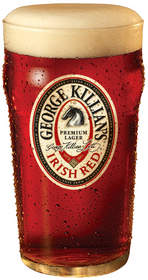seymour wrote:Another shortcoming in all these scales, in my humble opinion, is the inability to account for redness...
MikeG wrote:Well said seymore ...and how do they make beers red? I'm thinking of the Shepherd Neame "Autumn Late Red" lovely beer and lovely colour...
As others have said, a simple way to get redness is a small percentage of Roasted Barley, Black Malt, or just dark invert syrup (as with most modern-day "Irish Reds") but these can become more toasty and roasty than you want, or just really one-dimensional:hophit wrote:So what is your secret for redness? Carared seems to work well for me, but no cheap, any other ways? Crystal just doesn't seem to do it the same for me.

Another technique is large percentages of lightly caramelized malts, such as Stone Arrogant Bastard, which is believed to be 100% Munich Malt:

Here are a bunch of my own recipes which turned-out various shades of reddish brown. As you can see, I've taken many paths to get there. I'll skip the base malts and pale unmalted grains, and only list the ingredients which contribute colour. I sometimes darken my beers a little with kettle caramelization during long boils, too.
Saaz Stoopid
containing: 9% Crystal Malt, 2.3% CaraWheat, .9% Brown Malt, 14.4% Dark Brown Sugar

American Farmhouse Ale
containing: 12.8% Brown Malt, 1.6% Toasted Malt, .6% Roasted Barley

Dry-Hopped Barleywine
containing: 6% Special-B Malt, 4% Vienna Malt, 4% CaraWheat, 4% Brown Sugar

Chocolate Milk Stout
containing: 16.7% Red Wheat, 8.3% American Chocolate Malt, 8.3% Dark Brown Sugar, 3% Brown Malt

& Chocolate Sour (same mash, made from the second runnings plus dark brown sugar)

Black Walnut Mild
containing: 5% Crystal Malt, 3% Black Malt, 8% Dark Invert Syrup

Flyer Best
containing: 10.2% Toasted Buckwheat, 8.8% Victory Malt, 5.7% Crystal Malt, 1% Black Malt

Dark Mild No.3
containing: 8.5% Brown Malt, 7% Crystal Malt, 3% English Chocolate Malt, 3% Molasses


